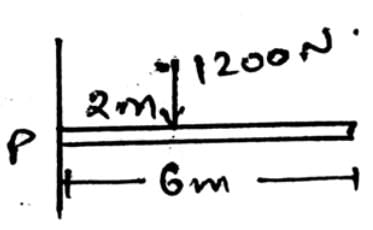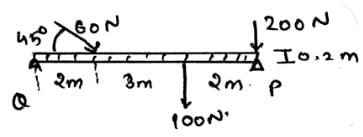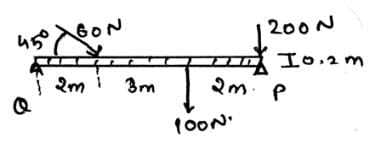Test: Conditions for a Rigid-Body - Civil Engineering (CE) MCQ
10 Questions MCQ Test Engineering Mechanics - Test: Conditions for a Rigid-Body
The shown here has a mass of 100kg. What is missing here in the diagram?


Determine the vertical components of the reaction on the beam caused by the pin at Q. The force 60N is multiplied by 10 and then is applied.


Determine the horizontal components of the reaction on the beam caused by the pin at P. The force 60N is multiplied by 10 and then is applied.

Determine the horizontal components of the reaction on the beam caused by the roller at P.

The net moment of the body is zero that means the distance between the force and the rotational axis is zero.
The net force of the body is zero that means the force are not being applied to the body at all and hence the body is in equilibrium.
The principle which states that the conditions of equilibrium of motion of a rigid body will remain unchanged if a force F acting at a given point of the rigid body is shifted to another point which is on the same line of action is known as:
For the conditions of the equilibrium of the body, i.e. the rigid body only the external forces defines the equilibrium. Because the internal forces cancels out so not to be considered.
|
24 videos|59 docs|53 tests
|

















